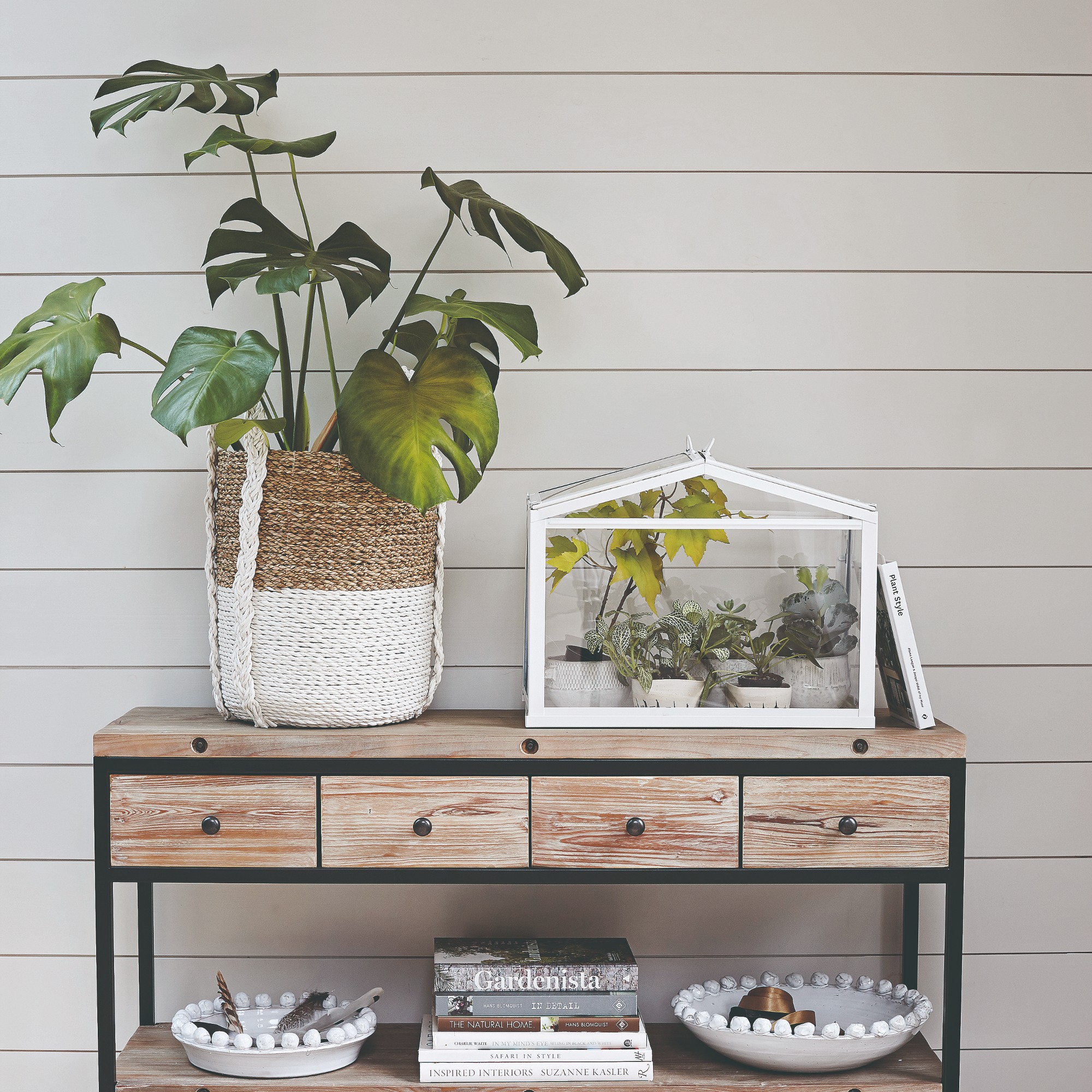
Once upon a lockdown, I accidentally signed up to a houseplant subscription service and couldn’t work out how to stop them arriving at my home in their droves – which means I’ve learned a lot about loving (and killing) indoor plants. A lot.
What, though, is my one golden rule for keeping houseplants alive? Well, while the biggest killer of houseplants is – spoiler! – allowing them to become pot bound, I’ve actually found my own indoor plant ideas to be felled by…
Well, by the sun. Yes, that big old ball of hydrogen burning merrily away in the sky. Go figure. Here's exactly what I mean by that...
My golden rule for keeping houseplants alive
It is a truth not yet universally acknowledged (by anyone other than me, it seems) that the hardiest of indoor plants can be found in the depths of IKEA – and that's largely because they're kept in a basement where not a single mote of sunshine can find them.
These are the plants that have learned to not just survive, but thrive in windowless conditions. The plants that can be thrown into the darkest of rooms, on the darkest of days, and still grow as green and leafy as ever before.

Whether you're working with unkillable houseplants, then, or one of the best houseplants money can buy, you'd best believe that sunshine – a lack of or an overdose of – plays an incredibly important role in the health of your houseplant.
I live in a teeny Edwardian semi-detached home, which means light is plentiful in the front and back rooms of my house... and not so much at all towards the middle.
As such, I have to select where I'm putting my houseplants incredibly carefully, depending on their individual wants and needs.

The dining room, bathroom, and main bedroom? Glorious suntraps that are perfectly suited to sun-loving plants like our decades-old Christmas cactus, a bevy of succulents, and palms.
The darker living room and second bedroom? Well, my one golden rule for keeping houseplants alive means its home to those that can tolerate low-light conditions, such as our (sourced at IKEA, yes) monstera deliciosa and English ivy.
How to use sunlight to your advantage with houseplants
Of course, my hot take on caring for houseplants isn't all that hot when you get right down to it; plenty of experts – like Kelly Dyer, in-house plant doctor at Patch Plants – agree with me.
'Giving your plants the right amount of light is key. Indoor light is much more filtered than the light plants get outside, even more so if we have curtains, blinds or netting. Light is the equivalent of plant food – what they convert into energy to grow,' she says.

So, what does this all mean for you? And how can you put the one golden rule for keeping houseplants alive to work for you in your own home?
'When we say "bright light" we mean close to a window (ideally south-facing), when we say "bright indirect light" we mean in a sunny room that gets a good few hours of sunlight a day but maybe diagonal to or on the opposite side to the window,' explains Kelly.
'And "low light" still means some light,' she adds. 'If you have a north-facing room that only gets a few hours of light a day, then we mean place the plant as close to the window as possible in that room. Some plants may tolerate low light, but they won’t thrive in it. It’s like keeping them on a strict diet!'
FAQs
How do I keep my indoor plant alive?
The easiest way to keep your indoor plant alive is to do your research. 'You need to get to know your plants individually!' says Ellen-Mary Webster, author and professional gardener.
'Each plant has a different requirement in order to thrive, so if you look at your plant closely frequently you will be able to see any changes such as yellowing leaves, pests, droopiness and be able to take action soon enough to make changes to help your plants survive.'
How to keep indoor plants healthy?
If you're not sure how to keep indoor plants healthy, it's a good idea to spend a little time reading up on their likes and dislikes, especially when it comes to how much water and sunlight they need.
'There are many reasons why houseplants don’t thrive from the compost they are initially planted and transported in, to how much water they get, how much light they receive, nutrient levels and pests or disease,' explains gardening pro Ellen-Mary Webster.
It's a good idea, then, to keep a folder stashed away somewhere with all of your houseplants' labels in it – just in case you need to consult back at some point.
My one golden rule for keeping houseplants alive may sound simple enough on paper, but it's guaranteed to save you a lot of heartache in the long run, so be sure to spend some time reading up on the light conditions of each plant in your home.
All you need to do then, of course, is find a spot that helps them meet these requirements. No big deal, eh?







